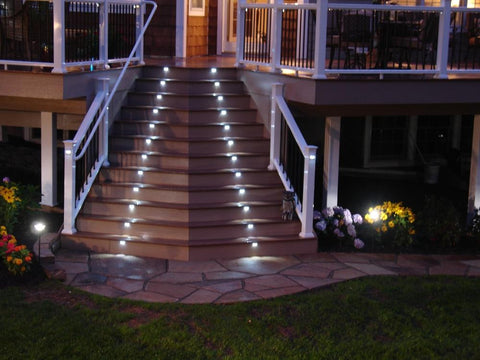Some facilities have extreme circumstances where typical LED lighting may not meet the special needs. This blog will cover four unique applications: high temperature, hazardous locations, food processing, and extreme outdoor. If you find yourself evaluating lighting upgrades for any of these types of environment, then please consider the products suggested.
- High Temperature High Bay and Flood Light Requirements – up to 190 Degrees Fahrenheit
- Explosion Proof High-Bay and Flood Light Requirements – C1D1 and C1D2
- Food Processing High-Bay Light Requirements - NSF Certified
- Extreme Outdoor High-Mast Light Requirements – IP67 and Salt Spray
High Temperature Facilities
Facilities that generate heat - like steel foundries, nuclear power plants, and other power generation plants - may have ambient temperatures near the lights of 190 degrees Fahrenheit. Most LED products work well in temperatures up to 130°F to 140°F. So, for electrical contractors or facilities managers planning a lighting upgrade in this type of environment, they really should take this into consideration. High temperatures require specialized, custom-designed fixtures to extend the life of the fixture thereby reducing maintenance costs and providing reliable lighting. To accommodate environments with this special need, MyLEDLightingGuide offers two families of High Temperature Fixtures that exceeds these typical ranges.
190°F (90°C) line of high-temperature LED 190°F High-Bays and LED 190°F Floods work well when the temperature can reach these extreme levels. It has a massive, custom heat sink in its solid-state design with under-driven components to maximize reduced heat production.

167°F (75°C) line of High Temp line of high-temperature LED 167°F High Bays and LED 167°F Floods that can work well when your temperatures are above 140°F but below 167°F.

Hazardous Locations
Some industrial environments require special LEDs because it can be dangerous if a light explodes. Environments where explosive concentrations of dust or vapors may exist must be equipped with special lighting for safety purposes. Hazardous industrial facilities can include:
- Oil refineries/offshore oil platforms
- Chemical plants
- Gas stations, pumping stations, substations
- Waste water treatment plants
- Paint facilities, coal mining
- Military bases, weapons storage
- Tunnels or airports
You likely have heard of the classifications C1D1 or C1D2 etc. But do you know how to choose the right explosion proof LED light for these classifications? We’ve put together a simple guide to explain what types of explosion proof lighting classifications there are to help you when making that decision.

Food Processing
While food and beverage plants are industrial spaces, the lighting fixtures used in them cannot be the same ones used in industrial spaces like manufacturing plants and warehouses. The light fixtures used in food processing facilities must have a high level of protection against elements such as airborne dust, effluents, steam, mist, water, oils, grime, cleaning solvents, and other contaminants.
Our NSF Certified LED Food Processing Lights are specifically designed to meet all the stringent food grade luminaire guidelines. Designed to replace 250W to 400W+ Metal Halide.
Extreme Outdoor Requirements
Seaports and off-shore drilling platforms are unique applications when it comes to lighting. The corrosive nature of the salt air can limit the lifespan of typical lights. So, electrical contractors need to be aware that there are alternatives for these environments that will provide, long-lasting, outstanding outdoor LED lighting. One such light is the pole-mount LED high mast. It is IP67, comes with a 10-year warranty and is available in up to 900W LED. This light can replace up to a 2000W MH. It is also unique in that it has an optional remote drive installation – allowing for convenient installation; minimizing maintenance costs.

Whether you are replacing lighting in a hazardous location, a high temperature power plant, in a food processing plant or are by the ocean, you need to heed these special considerations. Our LED techs are available to chat via this website and answer your questions. Click on the “chat” button in the lower right – and just ask!
